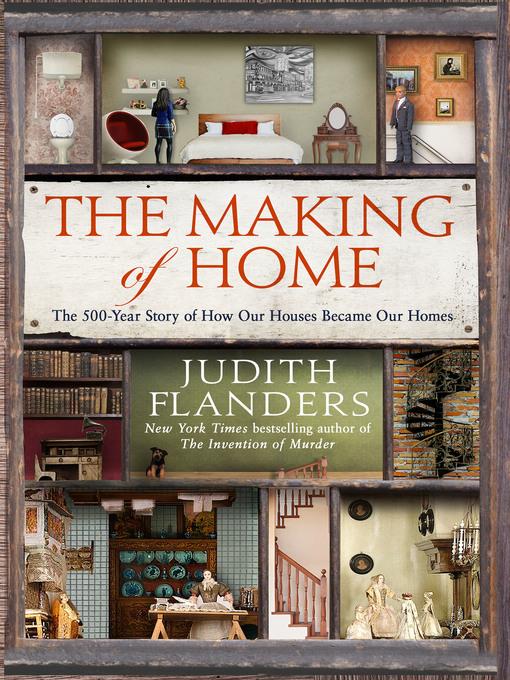
The Making of Home
The 500-Year Story of How Our Houses Became Our Homes
کتاب های مرتبط
- اطلاعات
- نقد و بررسی
- دیدگاه کاربران
نقد و بررسی

Starred review from June 29, 2015
British social historian Flanders (The Victorian City) takes readers on an engrossing tour as she traces the process by which houses—physical structures constructed for shelter and functionality—evolved into homes: the places in which we live, belong, and feel comfortable. Home, according to Flanders, is in part an enduring myth, and in part a state of mind. The concept is wrapped up in a number of related topics, so she delves into social, cultural, technological and historical concepts to recount the development of furniture, heating and lighting, gender roles, and much more. Likewise, Flanders debunks a number of misapprehensions regarding the “ideal” home and the very nature of family, demonstrating that a great many factors have been at play for centuries, providing a steady rate of change as form followed function. It’s a fascinating, eye-opening examination of just how far we’ve come in five centuries, from the most rudimentary of huts containing virtually nothing, to modern structures filled with furniture, efficiencies, luxuries, and technology. It’s possible to pick out any one of 100 different threads in Flanders’s work and marvel at how they’re all interconnected; you’ll never take a fork for granted again. Illus. Agent: Bill Hamilton, A.M. Heath (U.K.).

June 1, 2015
Social historian Flanders (The Victorian City: Everyday Life in Dickens' London, 2014, etc.) follows the evolution of the home from an edifice offering minimal shelter to present-day standards. First, the author classifies European cultures into "house" countries and "home" countries. The former includes those populations that spend their time in public spaces such as restaurants, promenading. The latter is more an experience of comfort, the imagined state of the good life. With that division, Flanders chronicles the life-altering changes to the structure of houses over the centuries. One of the first was the arrival of the fireplace and chimney and their placement away from the center of the room, enabling larger, two-story houses. Soon, the availability of glass allowed larger windows, which led to curtains. Suddenly, there was a need for privacy, so extra rooms were added, while the lovely large windows were covered to keep out light. The author compares the house countries in which houses were a status symbol to the Northwest European home countries, where the concentration was on convenience and enjoyment. Flanders does not neglect the inhabitants of these buildings, and her telling of a family making a stew perfectly illustrates the pre-industrial roles shared equally by men and women. The Industrial Revolution changed the makeup of the home. Workers now left the home to make a living in factories and offices. New technologies developed such things as piped water, plumbing, heat, electricity, and, eventually, 20th-century "labor saving" devices, which quickly created the divisions into gender-based roles. Covering all aspects of home life, Flanders even delves into modern architecture, popular in the house countries, which creates designs for ostentation rather than usefulness. The author's extensive knowledge of lifestyles and simple, concise writing combine for an enjoyable book showing how families have joined, separated, and rejoined over the last 500 years.
COPYRIGHT(2015) Kirkus Reviews, ALL RIGHTS RESERVED.

June 15, 2015
Flanders (The Invention of Murder) here considers topics that are--quite literally--closer to home, examining the political forces, technological innovation, and behavioral patterns that have lead to both the concept of and specific attributes of home in western Europe and the United States. Drawing on a variety of primary sources including household inventory records, diaries, and art, the author discusses how the introduction of corridors helped expand individual privacy, why Dutch masters' paintings of interiors were radically divergent from the way people really lived--no one would put an expensive carpet on the floor, for example--or how the rise of coal as the residence fuel of choice changed what people were able to cook and eat at home. The content is scholarly and well researched but is presented in a manner accessible to the general reader. VERDICT Recommended for social historians as well as fans of HGTV and design blogs who are interested in learning more about the history of the home. [See Prepub Alert, 3/23/15.]--Stephanie Klose, Library Journal
Copyright 2015 Library Journal, LLC Used with permission.

September 1, 2015
Flanders (Victorian City, 2014) asks, What makes a house a home? When does a simple hut become more than just shelter? From corridors to curtains, porches to parlors, the evolution of how humans have shaped their abodes to adapt to their personal needs is an organic study in the ways form follows function. Throughout Europe and the U.S., from medieval times to the present, religion, agriculture, industry, and the arts have all influenced the ways people erect and utilize their domiciles. In her extensively researched and eminently readable discourse, Flanders examines the roles that gender, children, extended family, and auxiliary labor play in keeping the home fires burning, whether those fires are clods harvested from peat bogs or the latest high-tech, digitally simulated dancing flames in an electronic fireplace. Exploring the concepts of mutually exclusive and mutually beneficial tasks and finely deconstructing the myriad components that comprise the makeup and management of daily home life, Flanders' treatise is an encyclopedic examination of how humans have redefined what it takes to survive.(Reprinted with permission of Booklist, copyright 2015, American Library Association.)

























دیدگاه کاربران